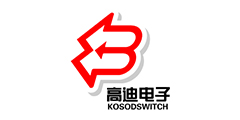Slide Switch Introduction

Description
A slide switch has an oblong, rectangular layout consisting of a slide control, a bracket or mount, the switch mechanism and solder or screw terminals for electrical connections. The control is made of an insulator, such as plastic, to prevent electrical shock. Typical switch sizes range from about one-half-inch long to about 2 inches; the switch’s size is related to the ability of a fingertip to move the control back and forth, so very small or very large switches are typically not slide types. Slide Switches handle between a tenth of an amp to several amps of current, and up to about 200 volts, depending on the size.
Action
The switch has two modes, “on” and “off.” Inside the switch mechanism, a piece of metal slides over a pair of metal contacts. In the off mode, the metal touches only one of the contacts; in the on mode, the metal touches both. If the switch is wired to a circuit, electrical current flows only when the switch is in the on position; current flows from the circuit to one contact, through the metal, to the second contact and back to the circuit. When the switch is off, a gap between the metal and the second contact prevents current flow.
A slide switch is a basic type of electrical control; you can find them on consumer electronics, industrial equipment and scientific instruments.
Direct Control
As long as an electrical circuit’s current is within the slide switch’s current rating, the switch can control the circuit directly. The switch can control lights, electronic devices and small motors. Current from a power source flows through the switch, to the circuit and back to the power source, forming a complete electrical circuit. When you turn the switch off, it breaks the circuit and turns the connected device off.
Indirect Control
A slide switch can control a circuit even if it exceeds the switch’s rating, though in this case the control is indirect. The switch sends a small current to a relay or transistor, which in turn controls a larger current or higher voltage from a separate power source. Though this arrangement is more complicated, it adds safety and reliability to the circuit because the switch carries only a small current. Putting excessive current or voltage through a slide switch increases the sparks produced when the switchmakes or breaks contact; this wears down the electrical surfaces more rapidly and poses a greater potential shock hazard.
- +1 Like
- Add to Favorites
Recommend
- Momentary Push Button Switch vs. Latching Push Button Switch: What’s the Difference?
- Littelfuse Launches Its Class J Fuse Disconnect Switch Combining Switch and Fuses to Simplify Operation and Protection While Saving Space
- The Advantages of Piezoelectric Switch
- Where is a Piezoelectric Switch Typically Applied?
- Choosing a Push Button Switch: A Simple Guide
- What Is The Difference Between Switch Bandwidth and Port Rate?
- CMOS-based Dual Supply Voltage Load Switch IC with Typically 18mΩ ON Resistance
- YXC Programmable Differential Crystal Oscillator YSO210PR Series, Frequency 155.52MHz, LVPECL Output, Used in Switches
This document is provided by Sekorm Platform for VIP exclusive service. The copyright is owned by Sekorm. Without authorization, any medias, websites or individual are not allowed to reprint. When authorizing the reprint, the link of www.sekorm.com must be indicated.






























































































































































































































































































































































































































































































































































































































































































































































































































































































